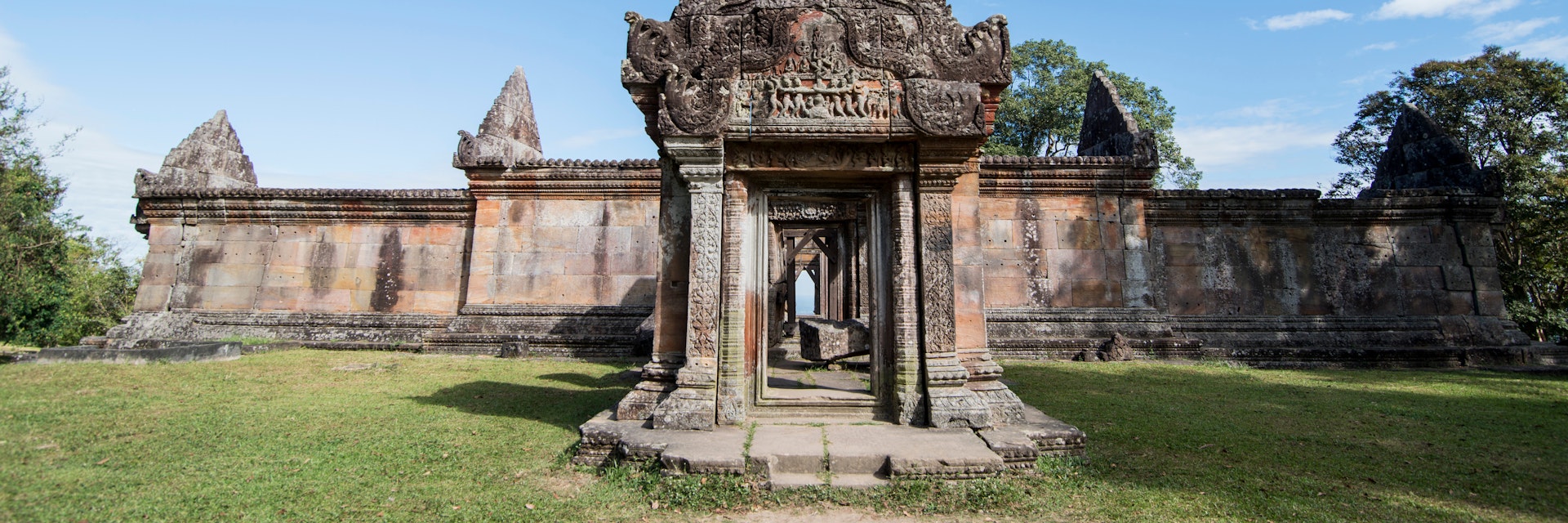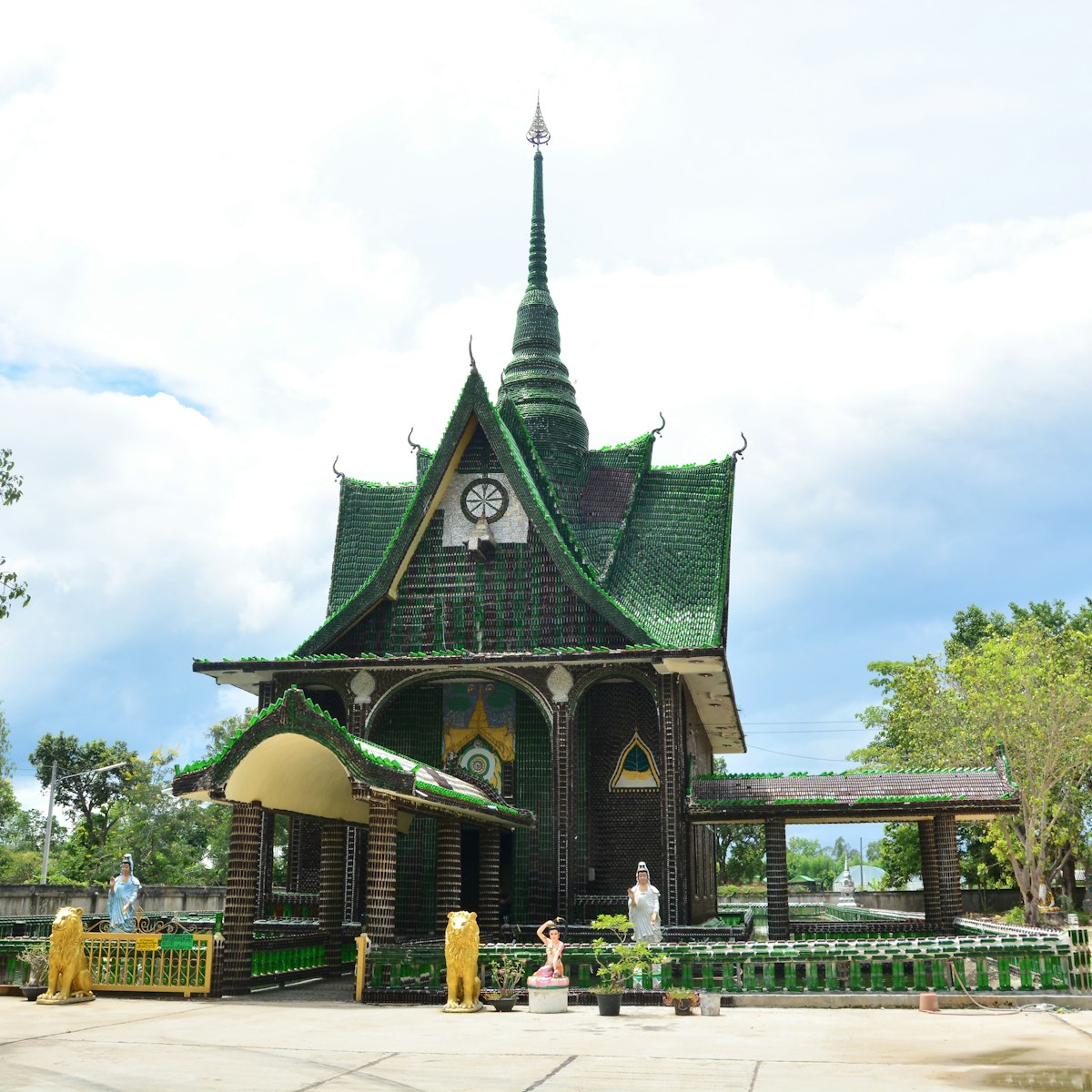The most dramatically situated of all Angkorian monuments, Prasat Preah Vihear sprawls along a clifftop near the Thai border, with breathtaking views of lowland Cambodia 550m below. An important place of pilgrimage for millennia, the temple was built by a succession of seven Khmer monarchs, beginning with Yasovarman I (r 889–910) and ending with Suryavarman II (r 1112–52). Like other temple-mountains from this period, it was designed to represent Mt Meru and dedicated to the Hindu deity Shiva.
For generations, Prasat Preah Vihear (called Khao Phra Wiharn by the Thais) has been a source of tension between Cambodia and Thailand. This area was ruled by Thailand for several centuries, but returned to Cambodia during the French protectorate, under the treaty of 1907. But sovereignty over the temple has been an issue ever since, with tensions between Cambodia and Thailand flaring up from time to time – most recently from 2008 to 2011, when armed confrontations around the temple claimed the lives of several dozen soldiers and some civilians on both sides.
The temple is laid out along a north–south processional axis with five cruciform gopura (pavilions), decorated with exquisite carvings, separated by esplanades up to 275m long. From the parking area, walk up the hill to toppled and crumbling Gopura V at the north end of the temple complex. From here, the grey-sandstone Monumental Stairway leads down to the Thai border.
Walking south up the slope from Gopura V, the next pavilion you get to is Gopura IV. On the pediment above the southern door, look for an early rendition of the Churning of the Ocean of Milk, a theme later depicted awesomely at Angkor Wat. Keep climbing through Gopura III and II until finally you reach Gopura I. Here the galleries, with their inward-looking windows, are in a remarkably good state of repair, but the Central Sanctuary is just a pile of rubble. Outside, the cliff affords stupendous views of Cambodia’s northern plains, with the holy mountain of Phnom Kulen (487m) looming in the distance. This is a fantastic spot for a picnic.
Prasat Preah Vihear sits atop an escarpment in the Dangrek Mountains (elevation 625m), 30km north of the town of Sra Em and about three hours by car from Siem Reap. Your first stop upon arriving should be the information centre, where you pay for entry, secure an English-speaking guide if you want one (US$15), and arrange transport up to the temple via moto (US$5 return) or 4WD pickup truck (US$25 return, maximum six passengers). Bring your passport as you’ll need it to buy a ticket. The first 5km of the 6.5km temple access road are gradual enough, but the final 1.5km is extremely steep; nervous passengers might consider walking this last bit, especially if it's wet.


